Getting passengers back on-board: IndyGo’s road to recovery
- Like
- Digg
- Del
- Tumblr
- VKontakte
- Buffer
- Love This
- Odnoklassniki
- Meneame
- Blogger
- Amazon
- Yahoo Mail
- Gmail
- AOL
- Newsvine
- HackerNews
- Evernote
- MySpace
- Mail.ru
- Viadeo
- Line
- Comments
- Yummly
- SMS
- Viber
- Telegram
- Subscribe
- Skype
- Facebook Messenger
- Kakao
- LiveJournal
- Yammer
- Edgar
- Fintel
- Mix
- Instapaper
- Copy Link
Posted: 24 October 2022 | Inez Evans - IndyGo | No comments yet
For the latest instalment of Intelligent Transport’s exclusive COVID-19 recovery series, Inez Evans, President and CEO of IndyGo, discusses the various initiatives and services that the agency has introduced to improve access to transportation in Indianapolis, as well as how community outreach programmes have played a key role in bringing passengers back to public transit.
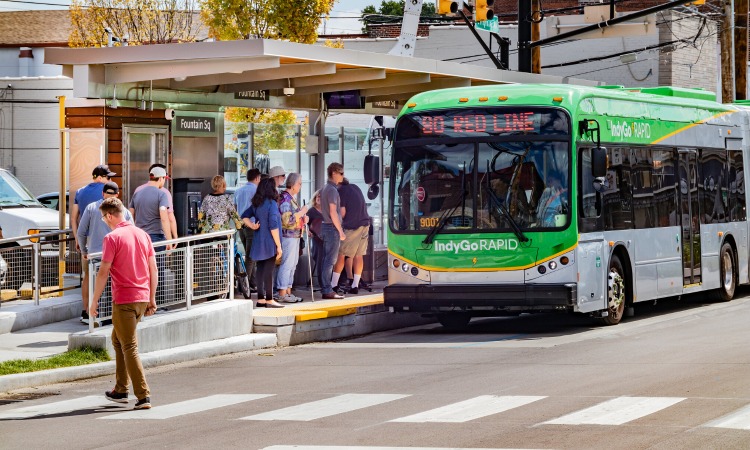

Credit: IndyGo
When you think about transit, buses often immediately come to mind. But you cannot have successful public transportation without the riders. At IndyGo (the Indianapolis Public Transportation Corporation), we consider our riders as family, making it our mission to connect our community to cultural and economic opportunities through safe, reliable and accessible mobility experiences.
When the pandemic hit in 2020, we unfortunately lost a portion of our IndyGo family for a variety of reasons, as lifestyle and ridership patterns changed. More than two years later, we are still recovering from the loss. But we’re working diligently to implement innovative ways to increase safety, accessibility and peace of mind to bring our riders back. While increasing ridership is critically important to what we do, providing a top-notch customer experience is equally as important and is at the forefront of every decision that we make.
Ensuring the safety of our riders
Rider safety is also a top priority at IndyGo. As COVID-19 is transmitted by airborne particles and travelling on buses involves riders sitting in an enclosed environment with others for an average of 30-45 minutes, it was critical for us to focus on how we could further enhance our clean air protocols. After listening to discussions on air exchange rates for airplanes and how those safety measures worked, we figured, why not have the same concept on our buses?
IndyGo partnered with a local innovative solutions company to equip our entire fleet with a state-of-the-art, UV-C light active air filtration system to help continuously remove viruses, germs and odours from the air riders breathe”
In order to accomplish this, IndyGo partnered with a local innovative solutions company, Lumin-Air, to equip our entire fleet with a state-of-the-art UV-C light active air filtration system to help to continuously remove viruses, germs and odours from the air that riders breathe. The system cleans the air every two minutes with no harmful chemicals. Installing this system was just one of many strategies that IndyGo used to combat the concern that many people had regarding the safety of bus travel amidst the pandemic. We can now provide even more peace of mind by reassuring all of our riders, including our most vulnerable populations, that we’re now producing some of the cleanest air on any bus in the nation. Our new motto is ‘Easy, Breezy, Cleaner Air, with Lumin-Air’.
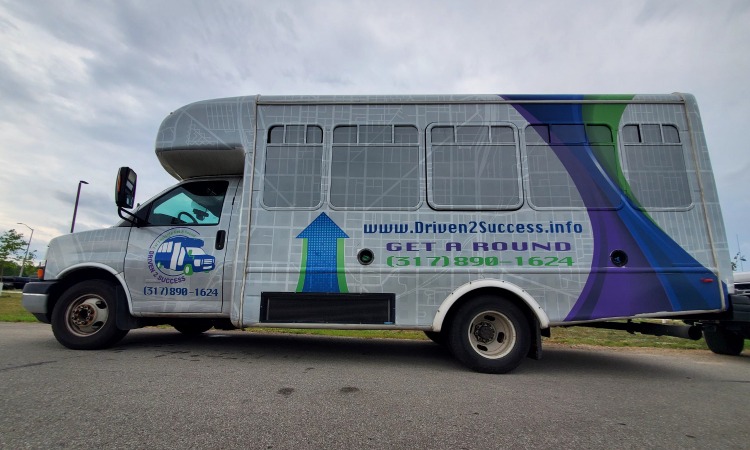

Credit: IndyGo
Improving access to transport
We have introduced three micro-transit projects to help to bridge the transit gap: Midtown-Get-Around, Driven 2 Success and IndyGo Connect. All three provide a customised, on-demand service to meet rider needs”
Better connecting our community to accessible rider experiences is also part of IndyGo’s strategic plan. We know that a 40ft bus is not always a reasonable option for transportation in every neighbourhood. This is why we have introduced three micro-transit projects to help to bridge the transit gap: Midtown-Get-Around, Driven 2 Success and IndyGo Connect. All three provide a customised, on-demand service to meet rider needs in three different pockets of the city where gaps in transportation exist. These transit services are designed to stay within a specific zone to either complete short trips in the designated area or connect riders to IndyGo routes that can fulfil their transportation needs. Not only are these systems hiring from within the neighbourhoods that they serve, but they are also empowering individuals in the community while encouraging a sense of pride.
For IndyGo Connect, our newest micro-transit programme that launched in early 2022, we recently experienced our highest ridership day, and numbers are steadily increasing. The implementation of these programmes increases IndyGo’s ridership potential by improving access to public transportation for more residents – subsequently enhancing the overall customer experience.
Increasing accessibility also means expanding service. IndyGo has officially started construction on the second of three planned Bus Rapid Transit (BRT) routes, the Purple Line. We often say that our BRT lines are built off the premise of a three-legged stool. Each one of the legs represent a BRT route, with the Marion County Transit Plan being the seat. These routes are necessary for many reasons, as they bring essential infrastructure improvements and a more reliable transportation option to advance Indianapolis’ most vulnerable communities.
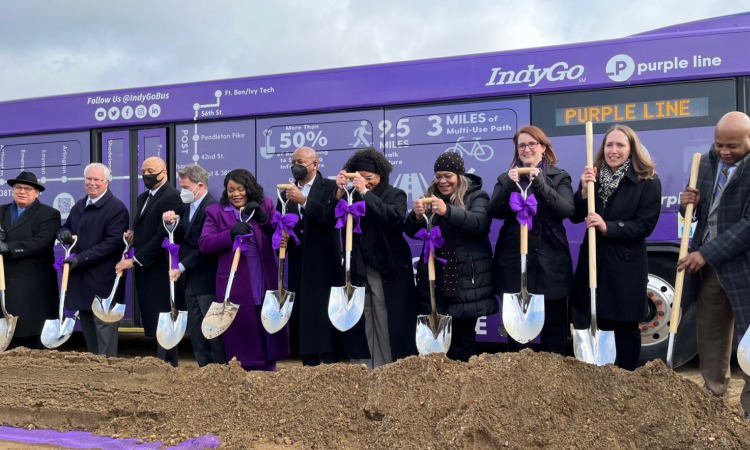

Credit: IndyGo
Once all three BRT lines are complete, IndyGo would have installed or upgraded more than 25 miles of pavements, put in nearly 1,500 ADA kerb ramps, provided more than 60 miles of street paving and implemented more than six miles of bike lanes and multi-use paths”
The Purple Line will specifically create nearly 10 miles of new or upgraded pavements, generate more than 350 ADA kerb ramps, provide new street paving, a multi-use path and storm sewer separation. Once all three BRT lines are complete, IndyGo would have installed or upgraded more than 25 miles of pavements, put in nearly 1,500 ADA kerb ramps, provided more than 60 miles of street paving and implemented more than six miles of bike lanes and multi-use paths through some of the city’s most densely populated areas. These immense improvements are important to extremely underserved communities that have not received these types of benefits in decades. In addition, these investments in infrastructure are also greatly enhancing connectivity throughout the city for people walking on pavements, riding bicycles along pathways and utilising our city’s growing trail system. It’s improving the first- and last-mile concept, which more easily links people to public transit.
Along with the IndyGo infrastructure upgrades that will impact more than 160,000 people living within walking distance of the improvements, we can’t forget about the economic development that follows increased bus services and updated corridors. In Indianapolis, employers like Cook Medical and Eskenazi Health and additional housing developers have committed to investing along the future Purple Line. Many others have already invested millions along the existing Red Line, our first BRT route – generating more opportunities for people to ride IndyGo to access critical services, jobs and affordable housing.
By providing a ‘pay as you go’ fare structure with a cap on the amount that customers pay, we have removed the barrier of the upfront cost of passes”
Fare-capping is another way that IndyGo has increased accessibility for our riders. By providing a ‘pay as you go’ fare structure with a cap on the amount customers pay, we have removed the barrier of the upfront cost of passes. After speaking with our community, we have understood that many of our most vulnerable riders must make difficult financial decisions daily. Indianapolis is a convention town where many people work in the service industry. Therefore, riders might not have the luxury of being able to spend money on monthly bus passes all at once. Allowing them the opportunity to pay daily and take advantage of fare-capping addresses the disparity in equity between them and others who can afford to pay in advance, which in turn allows greater access to our services.
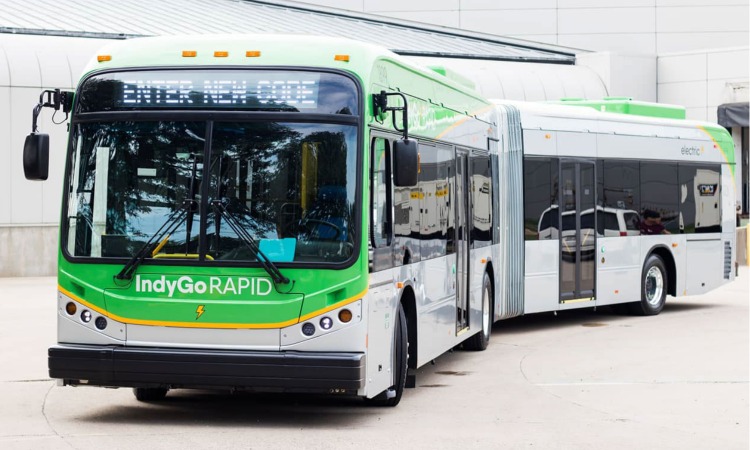

Credit: IndyGo
Reaching out to the community
Our community outreach programming is also making huge strides toward enhancing the overall customer experience”
Our community outreach programming is also making huge strides toward enhancing the overall customer experience. IndyGo Cares is a multi-pronged approach that is providing additional resources and enhancements to our riders in an easily accessible location at our Julia M. Carson Transit Center. Launched in 2022, Wellness in Transit is an exciting new partnership with Gennesaret Free Clinics. The programme consists of a mobile medical clinic that provides free healthcare services regardless of health insurance status.
Furthermore, Food in Transit, launched in 2018, is a partnership with a local urban farming agency, Growing Places Indy, and the City of Indianapolis Department of Metropolitan Development. Through this programme, the public can purchase fresh, affordable, locally grown produce, and those who cannot afford to pay are able to receive some items free of charge. This also takes place at the Carson Transit Center on the same day and during the same time frame as Wellness in Transit, creating a one-stop shop for important resources.
Finally, Music in Transit and Art in Transit celebrate the local arts community and provide access to music concerts and arts exhibits located along our bus rapid transit system. Through these programmes, we are excited to provide resources to enhance the wellbeing of our riders, while reducing the transportation burden of an added trip.
In addition, these important partnerships are helping to highlight the fact that we’re much more than a bus service, we’re also a community partner. This allows us a seat at the table to reach other companies and organisations who may be able to donate bus passes to another vulnerable population or additional programming to enhance our riders’ quality of life.
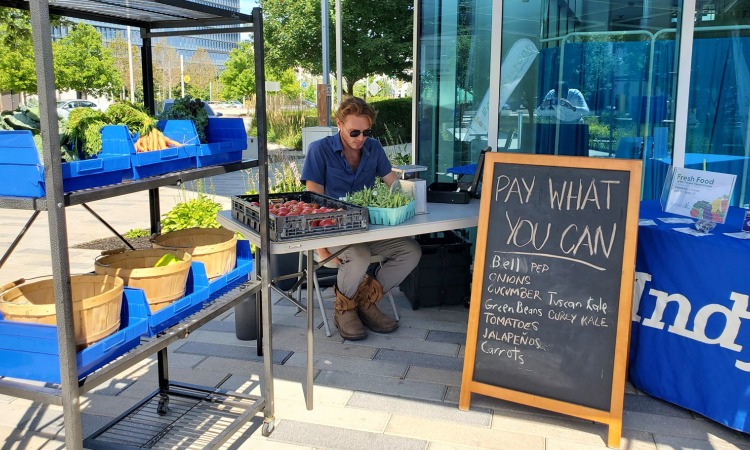

Credit: IndyGo – Food in Transit
Working with our partners
Our team members have led the charge, in collaboration with the city, to push a transit-oriented development policy to regulate what structures can be built around our bus stops and properties. This helps developers and stakeholders to understand the significance of public transportation and the investments being put forth, while blocking other businesses from building structures that prevent public transit from progressing.
A new mobility concierge service will be coming soon, which will allow riders utilising our on-demand services to be able to call our customer care centre to book their trips”
Everything that we do at IndyGo centres around what will bring the most benefit to our riders – our IndyGo family. This includes ongoing work with partners to build more bus shelters to shield riders from bad weather and a new mobility concierge service, which will be coming soon. The new service will allow riders that are utilising our on-demand services to be able to call our customer care centre to book their trips. It will increase equity for the 70 per cent of our riders who are from households making less than $35,000/year and can’t necessarily afford the luxury of a smartphone or other technology that relies on an app.
Although COVID-19 brought significant challenges, IndyGo continues to pivot and create more opportunity for our riders. As we continue to progress, we hope to dive further into more options that will bring our IndyGo family back, as well as add to it. One thing we know to be true, is that as long as we stay focused on the customer experience and meeting their needs, we are confident that our ridership will continue to grow.
Inez Evans has been IndyGo’s President and CEO since Summer 2019, when she became the first minority woman to lead the transit agency. Inez manages an agency of more than 800 employees and a fleet of more than 300 vehicles, averaging nine million trips annually. During her three years at IndyGo, Inez has ushered in the agency’s first all-electric bus rapid transit line, recruited emerging leaders to the executive team, maintained and innovated service during the pandemic, developed and executed the purchase of a new headquarters location to meet the growing needs of the agency, put new vehicles into service moving IndyGo towards its clean fleet goals, enforced vendor accountability, enhanced improvements with paratransit services and championed diversity and workforce development.
If you would like to take part in our ‘Getting passengers back on-board: Transport’s road to recovery’ series, or would like to nominate a colleague to take part, please email: Halimah Haque, Editorial Assistant, Intelligent Transport.
Related topics
Accessibility, COVID-19, Fleet Management & Maintenance, Getting Passengers Back On-Board: Transport's Road to Recovery Series, Infrastructure & Urban Planning, Mobility Services, On-Demand Transport, Passenger Accessibility, Passenger Experience, Public Transport
Related modes
Bus & Coach
Related cities
Indianapolis
Related countries
United States
Related organisations
City of Indianapolis Department of Metropolitan Development, Cook Medical, Eskenazi Health, Gennesaret Free Clinics, Growing Places Indy, Indianapolis Public Transportation Corporation (IndyGo), IndyGo, Lumin-Air
Related people
Inez Evans








